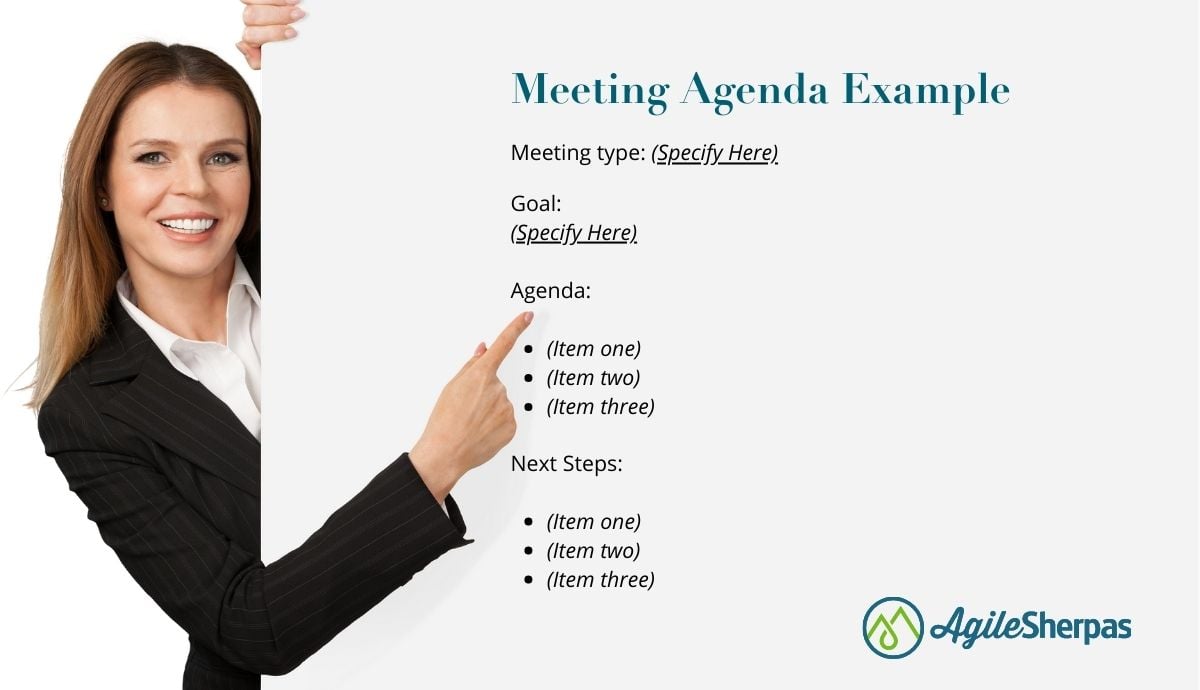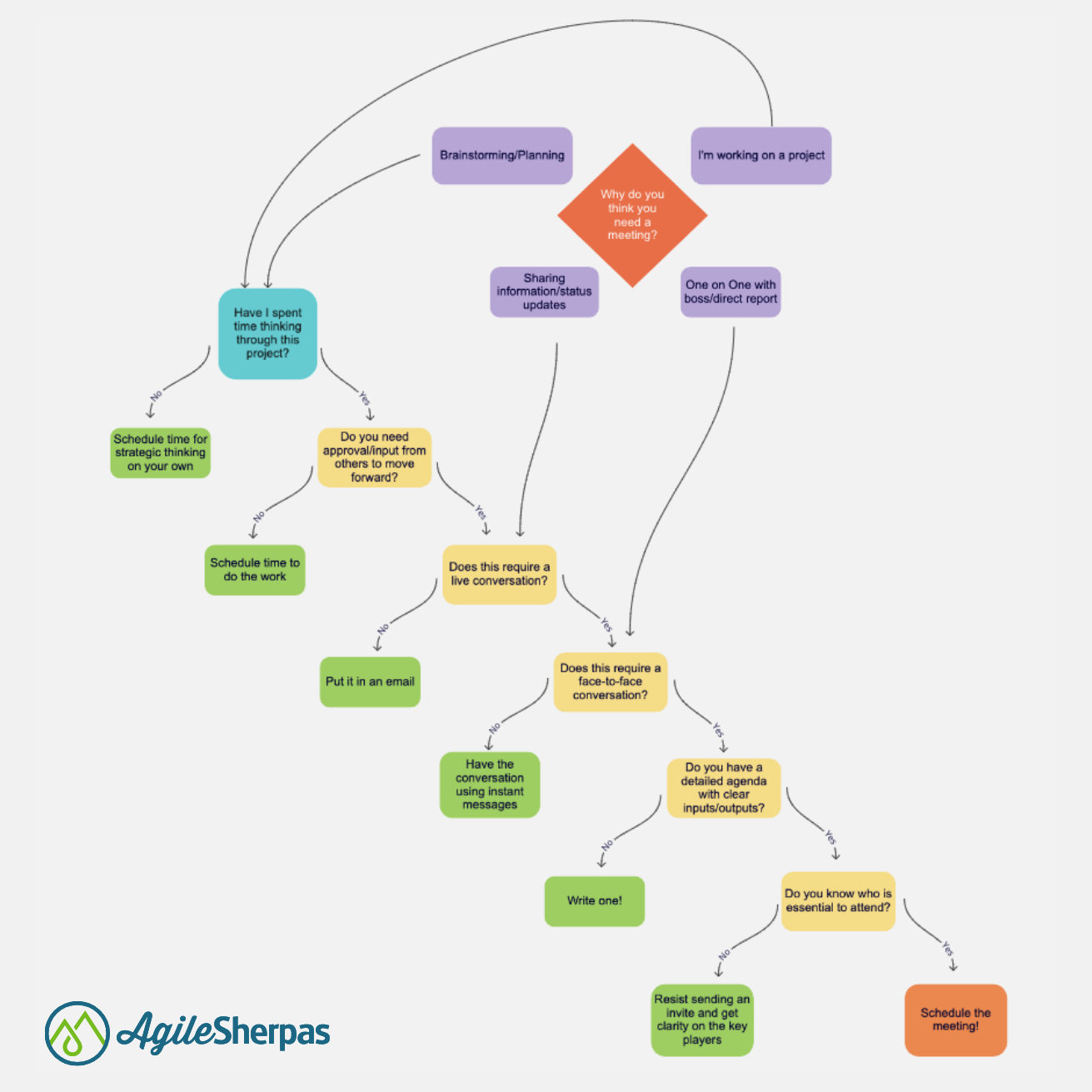Improve your Marketing Ops every week
Subscribe to our blog to get insights sent directly to your inbox.
Confront your process problems head on with a Sherpa by your side.
Explore support options that are tailored to meet you wherever you are on your climb.
Browse our pioneering Agile marketing courses
Learn from the stories of marketers already on the road to process improvement.
Featured Resource

State of Agile Marketing
Learn from 8 years of study on how marketers are increasing their agility.
Download Report
There’s nothing quite like feeling your eyes glaze over while dragging through your 5th zoom meeting of the day.
The host is droning on. You’ve gone down about 4 rabbit holes since the meeting started. You’re not even sure what the purpose of the meeting was in the first place.
All the while, you’re anxiously watching your inbox snowball out of control, your Slack notifications keep pinging, and you’re running out of daylight to get all your work done.
You’re faced with 2 choices:
What if it didn’t have to be this way?
Imagine instead a world where:
Without a doubt, one of the most common complaints from marketers is that they spend too much time in meetings. Some work across multiple teams, which adds even more restriction to their calendar. With all this time sitting in meetings and running from one call to another, marketers don’t have time to get any actual work done.
Whether you're in a startup or a massive BFSI marketing team, it is possible for marketing teams to take their calendars back.
But to do so they need teamwork, and the discipline to follow a few ground rules for effective meetings. These are those ground rules. Follow them, and you'll have fewer meetings (and fewer meetings to follow up and prepare for other meetings). And the meetings you do choose to have will be far more effective.

Every invitation, calendar or otherwise, should explicitly include the purpose of the meeting and the items to be covered.
This expectation should be set with everyone on the team, and all members should make sure conversations are related to the meeting’s purpose (and nothing else). Without a clear agenda, large and small meetings can easily veer away from their goals.
If an agenda isn’t ready at the time a meeting is scheduled, make sure one gets added 24 to 48 hours in advance. If there’s something that will be reviewed in the meeting, share the link ahead of time. Structure the agenda as a simple, bulleted list of topics and resources, as seen in these handy examples.
All these practices allow attendees to gather their thoughts before the meeting, leaving more time for meaningful discussion instead of perusing materials.
In the agenda, make it very clear what the goal of the meeting TRULY is.
Is it to have determined the new team structure?
Is it to have a backlog of ideas cataloged for Q3?
Is it to collect feedback on a new design direction?
Remind everyone in the group at the beginning of the meeting what you’re all hoping to accomplish, and make sure it’s achieved by the end of the meeting.
A decision making conversation goes a lot differently than a brainstorming one. The goal of the meeting will determine the flow of the discussion, and, most importantly, the place it should land.
Ultimately, the desired output is your primary measure of success for any gathering of team members.
Have meetings materials or presentations prepped in advance of the meeting. Invitees arriving unprepared to the meeting is a common culprit for meeting failure, meetings dragging on beyond their timebox, and attendee frustration.
Arriving prepared is a sign of respect to your team and their time.
Don’t tolerate attendees who show up requesting a 10-minute recap of why the meeting was scheduled and what it’s supposed to do. They’re not respecting the agreed-upon flow, and shouldn’t come if they’re not prepared.
For example, if you’re participating in a retrospective meeting, make sure that you have a template ready to go that everyone has access to it.
To save even more time, share the template beforehand so people can pre-populate their thoughts.
If it’s a brainstorm session, create an ideation form for attendees to fill out before the meeting. Access to a repository of all of the ideas already documented in one place can help keep the meeting flowing, and make sure that time is budgeted for all ideas to be shared.
If you can prep any piece of the meeting beforehand, don’t hesitate to do it.
Disclaimer: everyone, not just the host, is responsible for keeping the meeting on track.
That’s why the agenda is shared among all participants beforehand.
If the group starts to stray off topic, suggest that those involved in the separate conversation set aside another time to talk through that particular issue and redirect back to the North Star agenda.
Everyone in the group has a right to call “ELMO” (Enough, Let’s Move On) if they feel the need to keep the meeting productive.
If you’ve done a stellar job of keeping the team on track and finish early, adjourn the meeting and resist filling up the remaining time with other topics.
Only invite people who are essential to the conversation.
Don’t add folks as “optional.” That’s just confusing 🤷♀️
Only include the people there who are necessary to drive the meeting agenda and outcomes.
Let everyone else get in that productive flow state and do actual work. After all, you should have a lovely visualized workflow in place where you can share insight, outcomes, and/or to-dos wherever it’s appropriate.

It might make the most sense for the host to be the note taker, but if this is a recurring meeting attendees may all take turns.
Make sure that you’re capturing the decisions made, takeaways, and next steps. Here’s a great template for meeting notes from our friends at Atlassian.
Before the meeting ends, summarize to the group to make sure that everyone is in agreement and nothing was missed. Email this recap out to the group after the meeting concludes.
Humans like round numbers. This means, we have a tendency to naturally default to 30 minute or 1 hour meetings.
Button up your agenda and you may find that most hour long meetings can be reduced to 30 or 45 minutes, and 30 minute long meetings can be trimmed to 15.
When in doubt, err on the side of a shorter meeting until it’s proven that you need more time.
Until then, respect the time box you’ve set for the meeting. If you’ve only allotted an hour, the meeting ends at that time regardless of how much progress was made.
Once again, if you complete your agenda items before time is up, adjourn the meeting early. Your coworkers will thank you.
A common knee jerk reaction when we need to talk to share information is, “Let’s have a meeting about it.”
Much of the time it’s not necessary to have real time, face-to-face conversations with people to communicate information and we can accomplish the same goal with technology.
Consider the following rough guidelines for setting a meeting before you actually send that invite:
When to keep to an Instant Message:
When to send an email:
When to have a meeting:

A more manageable schedule of meetings that you and your colleagues look forward to is just around the corner, but it won’t happen overnight.
Communicate with your team around the common goal of being more intentional with your meetings, and share best practices with those who are often on your invites.
Encourage them to start thinking critically about what meetings they need to attend and what meetings they really need to add to another colleague’s calendar or replace with another medium of communication.
If it’s determined that their attendance is essential, have them ask for more detailed information about the purpose and outputs of the meeting.
Sticking to meeting best practices and putting some extra time up front to prepare can save our teams a lot of time and overwhelm in the long run. So, next time, you get a calendar invite, consider optimizing it with one or all of the tips above. Then, try exploring other Agile project management techniques to level up how your marketing functions even more!

As a dedicated Agile trainer and coach, Colleen Dunn excels in bringing people together through Agile frameworks and giving them the tools they need to evolve into high-performing teams.
Subscribe to our blog to get insights sent directly to your inbox.
Subscribe to our blog to get insights sent directly to your inbox.